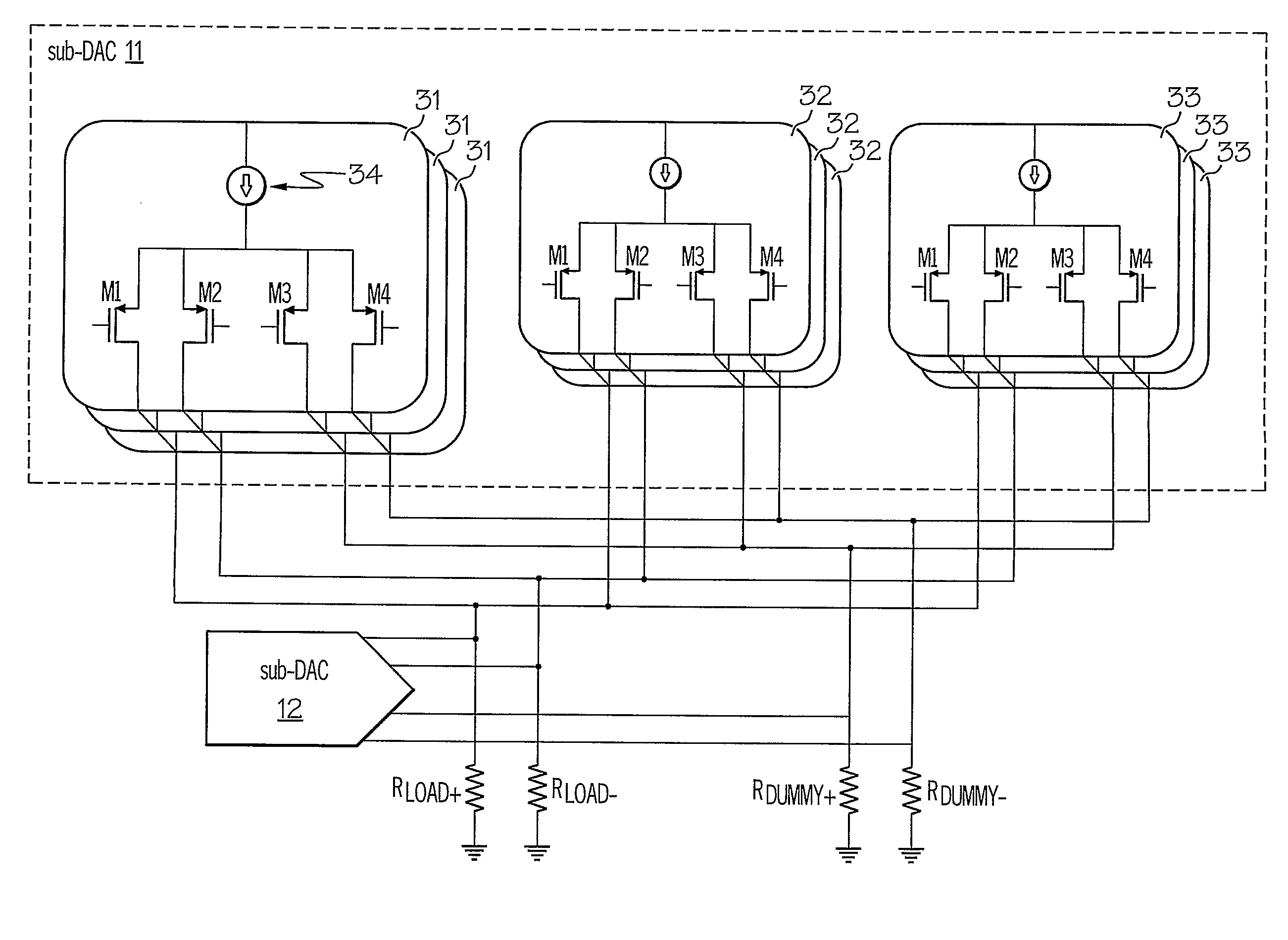Current-steering type digital-to-analog converter
a current-steering type, digital-to-analog converter technology, applied in the field of mixed signal circuits, can solve the problems of affecting the dynamic performance of the dac, forcing internal bias points to change,
- Summary
- Abstract
- Description
- Claims
- Application Information
AI Technical Summary
Benefits of technology
Problems solved by technology
Method used
Image
Examples
Embodiment Construction
[0016]Referring now to the drawings and in particular to FIG. 1, there is depicted a block diagram of a digital-to-analog converter (DAC), in accordance with a preferred embodiment of the present invention. As shown, a DAC 10 includes a sub-DAC 11 and a sub-DAC 12 connected in parallel. Preferably, both sub-DAC 11 and sub-DAC 12 are current-steering type DACs that are substantially identical to each other. The inputs of sub-DAC 11 and sub-DAC 12 are coupled to an input 15 via a register 13 and a register 14, respectively, that latch data values from input 15. At the rising or falling edge of a clock signal 17 that feeds register 13 and 14, data values from input 15 are stored into, and transferred to the outputs of registers 13 and 14, respectively. The output of sub-DAC 11 and the output of sub-DAC 12 can be selectively connected to a load resistor Rload or a dummy load resistor Rdummy via a switch 16.
[0017]For the sake of simplicity, only one switch 16 is depicted in FIG. 1 for th...
PUM
 Login to View More
Login to View More Abstract
Description
Claims
Application Information
 Login to View More
Login to View More - R&D
- Intellectual Property
- Life Sciences
- Materials
- Tech Scout
- Unparalleled Data Quality
- Higher Quality Content
- 60% Fewer Hallucinations
Browse by: Latest US Patents, China's latest patents, Technical Efficacy Thesaurus, Application Domain, Technology Topic, Popular Technical Reports.
© 2025 PatSnap. All rights reserved.Legal|Privacy policy|Modern Slavery Act Transparency Statement|Sitemap|About US| Contact US: help@patsnap.com



